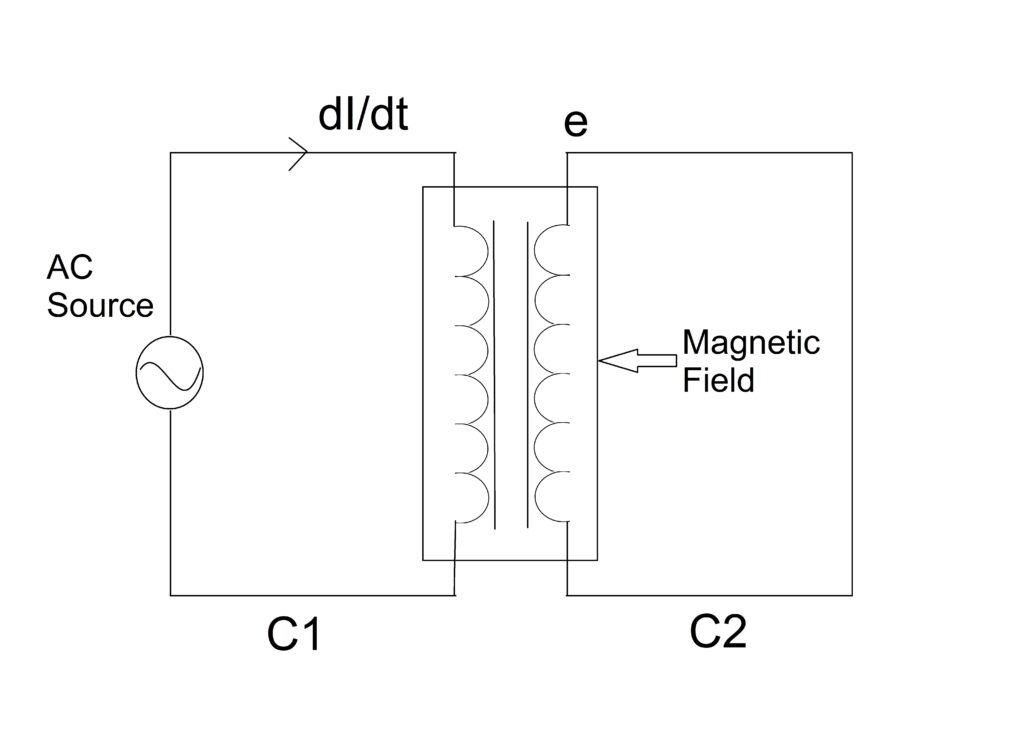Power transformer works on the principle of mutual induction. Now, what is mutual induction? When a current-carrying coil is placed near a non-current-carrying coil, emf i.e. electromagnetic force is induced in a non-current-carrying coil.

Let’s consider one current-carrying coil C1. Now consider another noncurrent carrying coil C2 placed near coil C1. In this case, due to a change in the current of coil C1 emf is induced in coil C2. Since the current in coil C1 is AC, it changes with time causing emf to induce in coil C2. This happens due electromagnetic property of the conductor. This Means current-carrying coil C1 creates a magnetic field around it. When we put another coil C2 in the magnetic field of Coil C1 an emf is induced in coil C2. Hence by changing the resistance of coils, emf and consequently voltage across coil C2 can be changed. This is the principle used in a power transformer to step up or step down the voltage.

Now consider basic equations. According to faradays law of electromagnetic induction.
e=M(dI/dt). Where
e=electromagnetic induction measured in volts.
M=Mutual induction measured in Henry.
dI/dt=Rate of change of current measured in Ampere per second.
Hence, as per the equation, emf induced that voltage across coil C2 depends upon the rate of change of current. This rate of change current is dependent on the resistance of the coils. And the resistance of the coil varies with the number of turns of the coil. Hence ultimately voltage is dependent on the number of turns of the coils. In short more the number of turns more is the voltage across that coil. So the equation can be written as
e=(N2/N1)dI/dt.
Whereas N1=number of turns of coil C1 and
N1=number of turns of coil C2.
By this principle, the voltage can be stepped up and stepped down. Voltage and turns relation can be expressed as
e1/e2=N1/N2
Whereas e1 = Voltage across coil C1 and
e2 = voltage across coil C2
This means the voltage is directly proportional to the number of turns of the coil which we call winding also. Hence we can have voltage stepped up and stepped down as we desire.